The coexistence of maritime and terrestrial traffic can occasionally result in catastrophic encounters, particularly when massive vessels come into contact with the towering structures of bridges. These incidents not only underscore the importance of navigational precision but also highlight the potential for immense structural and environmental damage. Here, we explore five significant ship-bridge accidents from around the globe, including the recent incident in Baltimore, that have left indelible marks on maritime history.
1. The Baltimore Incident: A Wake-Up Call for Maritime Safety
In a recent event that gripped the city of Baltimore, a large vessel collided with a key bridge, causing immediate concerns over structural integrity and traffic flow disruptions. The accident brought to light the challenges of navigating large ships in proximity to urban infrastructure and sparked a comprehensive review of safety protocols and bridge design standards. This incident not only affected the local community and economy but also served as a stark reminder of the delicate balance between maritime and urban environments. The 2025 Baltimore bridge collapse became a global headline when a container ship struck the Francis Scott Key Bridge, causing extensive damage and traffic chaos.
-
Immediate Impact: Structural failure of the bridge disrupted local traffic networks and halted port activities, affecting Baltimore’s economy.
-
Maritime Challenges: The accident exposed how navigating ultra-large container vessels in urban waterways remains a high-risk task.
-
Safety Lessons: Authorities initiated urgent reviews of ship-bridge safety protocols, pilotage systems, and bridge resilience standards.
-
Global Significance: The incident served as a warning for port cities worldwide, emphasizing the delicate balance between maritime trade and urban infrastructure.
-
Root Causes:
-
Possible loss of propulsion or steering control while navigating a tight urban waterway.
-
Bridge design not originally intended for today’s ultra-large container vessels.
-
Heavy reliance on human decision-making under tight clearance conditions.
-
-
Lesson: Modern infrastructure and navigation systems must adapt to the growing size of ships and urban proximity.
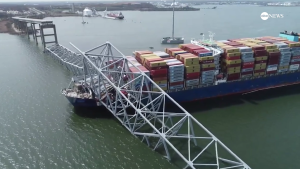
2. The Sunshine Skyway Bridge Disaster, USA, 1980
On May 9, 1980, the freighter SS Summit Venture collided with the Sunshine Skyway Bridge in Tampa Bay, Florida, amidst a severe thunderstorm. The accident led to the collapse of a portion of the bridge, resulting in 35 fatalities as vehicles plunged into the waters below. This tragic event prompted significant enhancements in storm preparedness, bridge design, and navigational aids, including radar reflectors and improved bridge lighting, to prevent similar catastrophes.
-
Casualties: A section of the bridge collapsed, sending vehicles plunging into the bay and killing 35 people.
-
Cause: Severe weather combined with poor visibility, challenging the freighter’s navigation.
-
Aftermath: U.S. authorities improved bridge lighting, radar reflectors, and storm preparedness measures.
-
Legacy: The disaster is now a case study in maritime safety training, illustrating the dangers of weather-related navigation errors.
-
Root Causes:
-
Extreme weather: torrential rain and strong winds reduced visibility to near zero.
-
Navigational aids of the time were inadequate for such conditions.
-
Lack of protective fendering around bridge piers.
-
-
Lesson: Weather, combined with weak infrastructure defenses, can turn maritime navigation into a catastrophic risk factor.
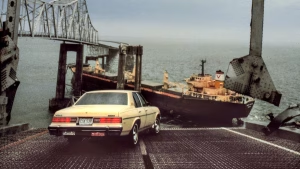
3. The Queen Juliana Bridge Accident, Curaçao, 1974
The Queen Juliana Bridge in Curaçao witnessed a catastrophic accident when the freighter MS Oranjestad struck it during construction in 1974. The collision caused significant delays to the bridge’s completion and emphasized the need for stringent safety measures during both the construction and operational phases of bridge management. It also led to a reevaluation of maritime routes and bridge protection systems in the region.
-
Consequences: Structural damage delayed the bridge’s completion and raised concerns about safety during construction near shipping lanes.
-
Safety Measures: Authorities reinforced protection systems for bridges under construction and imposed stricter maritime route controls.
-
Regional Impact: The accident forced Caribbean maritime authorities to reevaluate vessel traffic management around key urban infrastructures.
-
Root Causes:
-
Poor coordination between construction operations and vessel movements in the harbor.
-
Inadequate marking or signaling for vessels navigating near construction zones.
-
Limited enforcement of maritime safety protocols during infrastructure building.
-
-
Lesson: Construction sites in navigable waters require strict maritime route management and protective barriers.
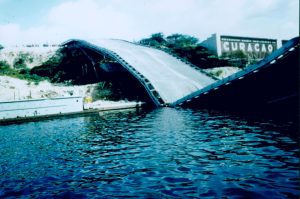
4. The Big Bayou Canot Rail Accident, USA, 1993
Although primarily a train disaster, the Big Bayou Canot rail accident was caused by a barge striking a railroad bridge in Alabama. The collision dislodged the bridge, and moments later, a train derailed and crashed, resulting in 47 deaths. This incident highlighted the broader implications of ship-bridge collisions, leading to improved communication and tracking systems for vessels navigating near bridges.
Unlike typical ship-bridge accidents, this tragedy involved a barge hitting a railroad bridge near Mobile, Alabama.
-
Sequence of Events: The collision displaced the bridge, and minutes later, an Amtrak train derailed, killing 47 passengers.
-
Significance: It became one of the deadliest rail disasters in U.S. history caused by a maritime incident.
-
Lessons Learned: The accident led to better communication systems, vessel-tracking technology, and structural monitoring of bridges near waterways.
-
Broader Insight: It highlighted that maritime accidents can have far-reaching effects beyond ports, impacting rail and land transport safety.
-
Root Causes:
-
The barge was unpowered and drifting due to poor navigation and lack of towboat control.
-
Foggy conditions reduced visibility.
-
The bridge had no protective fender system to absorb such impacts.
-
-
Lesson: Even non-powered barges pose severe risks; monitoring and defensive bridge design are crucial.
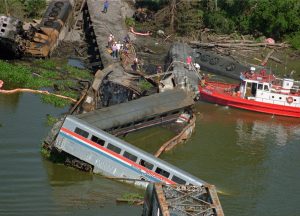
5. The Kerch Strait Bridge Incident, Crimea, 2018
The Kerch Strait Bridge, a vital link between Crimea and the Russian mainland, was struck by a large ship in 2018, causing substantial damage. The incident underscored the geopolitical tensions in the region and the importance of maintaining critical infrastructure. It prompted a reevaluation of maritime traffic regulations and the implementation of stricter controls to safeguard this essential bridge.
The Kerch Strait Bridge, a crucial link between Crimea and mainland Russia, was struck by a cargo vessel in 2018.
-
Damage: The bridge sustained structural harm, raising alarms about its resilience.
-
Geopolitical Context: The incident carried political weight, as the bridge symbolized Russian control over Crimea.
-
Maritime Response: Stricter navigation controls and traffic regulations were introduced in the Kerch Strait.
-
Strategic Importance: The event demonstrated how infrastructure vulnerabilities in contested regions can escalate geopolitical tensions.
-
Root Causes:
-
Congested and poorly regulated vessel traffic in the strait.
-
Possible misjudgment in maneuvering during strong currents.
-
Insufficient enforcement of navigation safety zones around the bridge.
-
-
Lesson: Critical bridges in politically sensitive waters need strict maritime traffic control and pilotage systems.
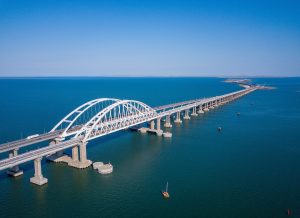
Navigational Challenges and Future Safeguards
In final analysis, the history of ship-bridge collisions teaches a clear and critical lesson: safety is forged in the aftermath of disaster. From the Sunshine Skyway to the Baltimore incident, each tragedy has exposed a unique vulnerability, leading to specific advancements in engineering, navigation, and regulation. These events collectively underscore that reactive measures, while crucial, are not sufficient. The ultimate imperative is a proactive and holistic approach to safety. This requires the continuous integration of cutting-edge technology, robust and resilient structural design, comprehensive crew training, and seamless inter-agency cooperation. The integrity of our global infrastructure and the safety of the public who rely on it depend on our unwavering commitment to anticipating risk and fortifying the vital links in our transportation network before catastrophe strikes.
These incidents collectively illustrate the complexities and dangers associated with the intersection of maritime and terrestrial traffic. They highlight the need for continuous advancements in navigation technology, bridge design, and regulatory frameworks to mitigate the risks of future collisions. As we move forward, the lessons learned from these tragedies will undoubtedly play a crucial role in shaping a safer and more resilient infrastructure for both ships and bridges alike.

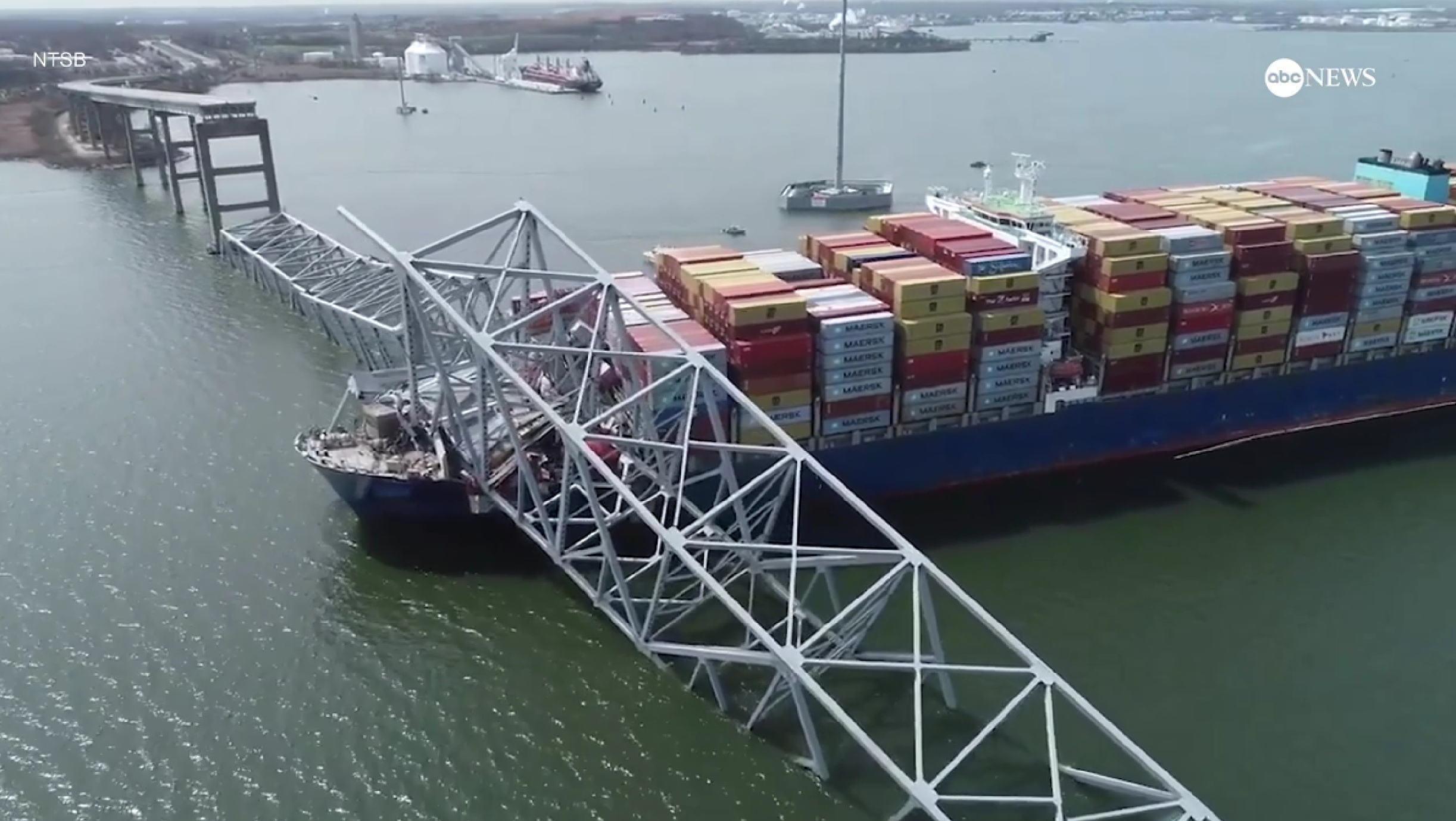
Your writing has a way of resonating with me on a deep level. I appreciate the honesty and authenticity you bring to every post. Thank you for sharing your journey with us.
I like this article, piease update it.